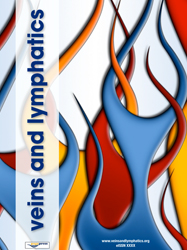Optoacoustic imaging of the glymphatic system

All claims expressed in this article are solely those of the authors and do not necessarily represent those of their affiliated organizations, or those of the publisher, the editors and the reviewers. Any product that may be evaluated in this article or claim that may be made by its manufacturer is not guaranteed or endorsed by the publisher.
Authors
Background: The glymphatic system is a brain waste clearance system mediated via cerebrospinal fluid (CSF) flow,1 with implications for influence on neurodegenerative diseases.2 Most preclinical glymphatic studies employ fluorescence imaging, which provides higher specificity, but a smaller field-of-view (FOV), or magnetic resonance imaging (MRI), which provides brain-wide FOV, but lower specificity. Functional optoacoustic neuro-tomography3 (FONT) offers a larger FOV compared to classical optical methods, and higher specificity compared to MRI. However, FONT has not yet been applied to probe the glymphatic system. In this study, we used fluorescence and optoacoustic imaging of a near-infrared dye, Janelia Fluor 669 (JF669), to track CSF and multimodal CSF-hemodynamic flows in mice.
Methods: After observing strong fluorescence and optoacoustic signatures of JF669 in phantom experiments, we performed a series of in vivo experiments in isoflurane-anesthetized C57BL/6 mice (n=3 fluorescence and n=4 FONT experiments, respectively) (Figure 1A). The lumbar injection was applied to deliver JF669 at a rate of 2 µL/min for 30 minutes. A polyethylene tube was placed intrathecally at the lumbar region (L4-L5). The scalp was removed. Fluorescence or FONT images were obtained every 5 minutes after injection.
Results: Fluorescence imaging and FONT probe CSF flow Images (Figure 1B) and time traces (Figure 1C) revealed time-dependent anatomical routes of paravascular influx, including the transport along the olfactory artery (OFA), superior cerebellar artery (SCA), and bilateral middle cerebral artery (MCA). For FONT imaging, since the OFA showed strong fluorescence (Figure 1B), we positioned the ultrasound transducer array at the anterior of the mouse brain with a FOV of 5x5 mm2 (Figure 1A). Standard filtered back-projection reconstruction was applied. Besides the OFA route of the paravascular influx, the dynamic images (Figure 1D) and time-traces (Figure 1E) also revealed time-dependent anatomical routes of CSF-interstitial fluid (ISF) exchange in the olfactory bulb (OFB) and paravascular efflux in the superior sagittal sinus (SSS) and the bilateral inferior cerebral vein (ICV). Next, we studied the aquaporin-4 (AQP4) dependence of glymphatic flow by subcutaneously injecting AQP4 inhibitor TGN020, in addition to the prior procedures. Under fluorescence imaging and FONT, we observed that TGN020 significantly decreased and spatially restricted the spread of JF669 in the brain. FONT spectral unmixing separates CSF and blood We swept the OPO through 680 nm to 750 nm, with 10 nm steps at 10 Hz in the phantom and in each animal. The multispectral reconstructions were unmixed using the known absorption spectra of hemoglobin and the JF669 OA spectrum obtained from the phantom.4 This enabled the separation of blood and JF669 signal (Figure 1D).
Conclusions: We characterized anatomical routes of paravascular influx (OFA), CSF-ISF exchange (OFB) and paravascular efflux using FONT, while fluorescence imaging only enabled visualization of the paravascular influx. We thus demonstrated the feasibility and advantages of FONT for probing the glymphatic system. These findings present great opportunities for monitoring and understanding the glymphatic system during development, aging, disease, pharmacological interventions and genetic modifications.
2. Rasmussen MK, Mestre H, Nedergaard M. The glymphatic pathway in neurological disorders. Lancet Neurol. 2018;17:1016-24.
3. Gottschalk S, Degtyaruk O, Mc Larney B, et al. Rapid volumetric optoacoustic imaging of neural dynamics across the mouse brain. Nat Biomed Eng. 2019;3:392-401.
4. Akerboom J, Carreras Calderon N, Tian L, et al. Genetically encoded calcium indicators for multi-color neural activity imaging and combination with optogenetics. Front Mol Neurosci. 2013;6:2.
How to Cite

This work is licensed under a Creative Commons Attribution-NonCommercial 4.0 International License.








